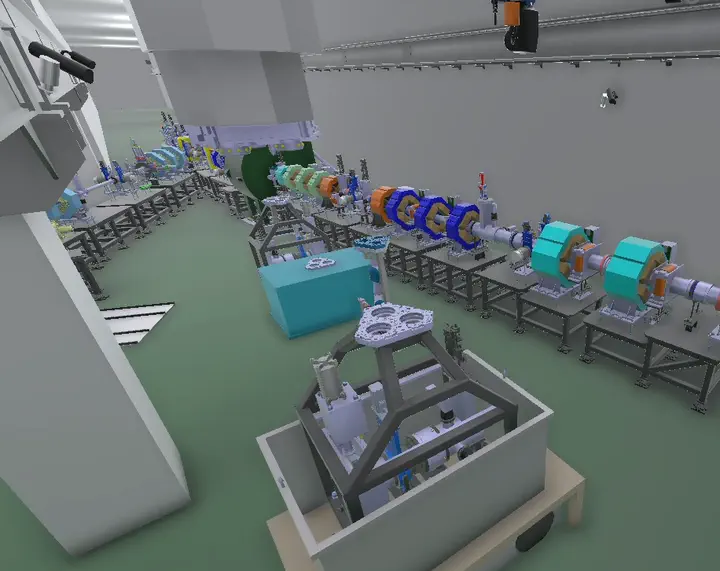Simulations of the Maintenance Activities in DONES

Virtual Reality Simulations of Logistics and Maintenance Procedures in DONES
One of the main research lines of the Valeria lab at the University of Granada is the development of virtual reality simulations. These tools facilitate the analysis of logistics and maintenance procedures in complex industrial or scientific environments, such as DONES, the particle accelerator under design in Escúzar, Granada (Spain). Our group is working in close collaboration with Fernando Arranz (CIEMAT) and Violeta Redondo and Manuel Ferre (UPM) to provide useful tools to support the integration of multiple CAD models.
More specifically, we are developing the tools allowing fast creation of simulations of well-described procedures. These simulations include features such as: interactive control of the number, type and location of cameras to visualize the operations, adjustable simulation speed, fast jumping between simulation stages, free exploration and measuring capabilities in the scene. In addition to this, the resulting simulation can be visualized in multiple devices, such as a personal computer or head-mounted displays.
These tools are being used in the framework of the EUROfusion program to create virtual reconstructions of the maintenance processes in the accelerator and test systems in DONES. Note that, in this kind of radioactive environment, some maintenance procedures must be performed by using remote handling equipment, as the long stay of operators in the room is inadvisable or even forbidden. These simulations allow the design teams to validate the maintenance procedures, identifying possible clashes during the operation and to explore the optimal camera layout to follow and control the movements.
The development of these tools has been founded by the Regional Government of Andalusia through the project “TAN19_UGR_IFMIF-DONES” and European Regional Development Fund (ERDF). The application of these tools to specific areas in DONES has been carried out within the framework of the EUROfusion Consortium, funded by the European Union via the Euratom Research and Training Programme (Grant Agreement No 101052200 — EUROfusion). Views and opinions expressed are however those of the author(s) only and do not necessarily reflect those of the European Union or the European Commission. Neither the European Union nor the European Commission can be held responsible for them.